Solution to Exercise 1.1:

Solution to Exercise 1.2:
Figure 1.89 shows the answers for treble and bass clef. If you have done another clef, have your teacher check your answers.
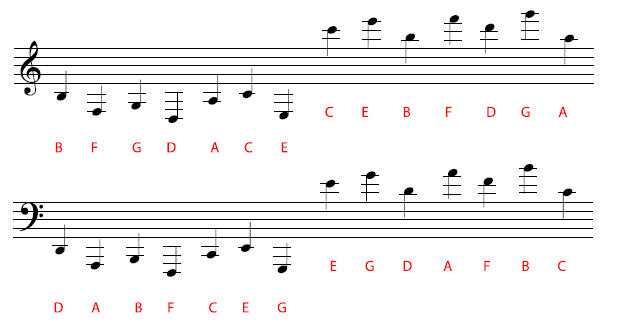
Solution to Exercise 1.3:
Figure 1.90 shows the answers for treble clef, and Figure 1.91 the answers for bass clef. If you are working in a more unusual clef, have your teacher check your answers.
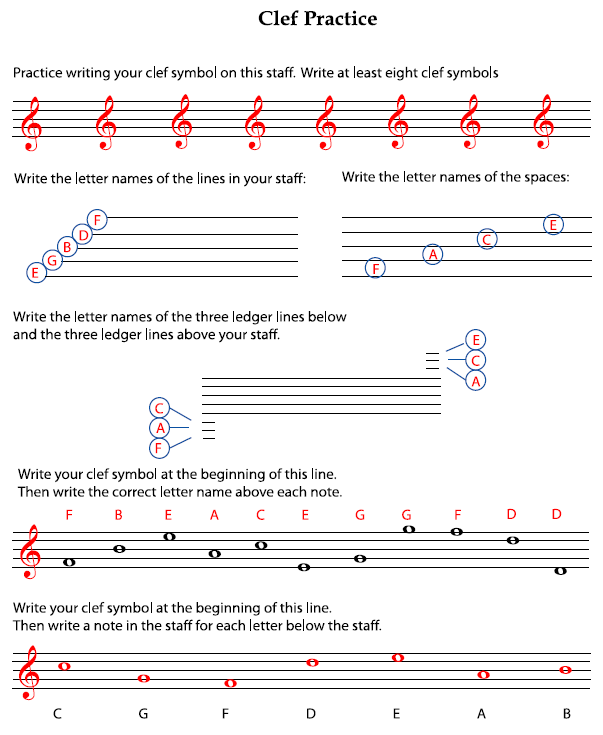

Solution to Exercise 1.4:

Solution to Exercise 1.5:
- C sharp and D flat
- F sharp and G flat
- G sharp and A flat
- A sharp and B flat

Solution to Exercise 1.6:
- F flat; D double sharp
- C flat; A double sharp
- B sharp; D double flat
- F double sharp; A double flat
- G double sharp; B double flat
Solution to Exercise 1.7:
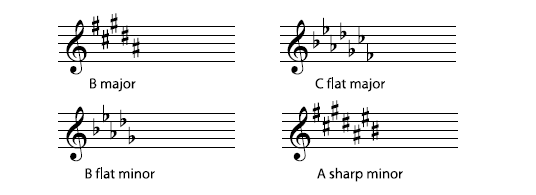
Solution to Exercise 1.8:
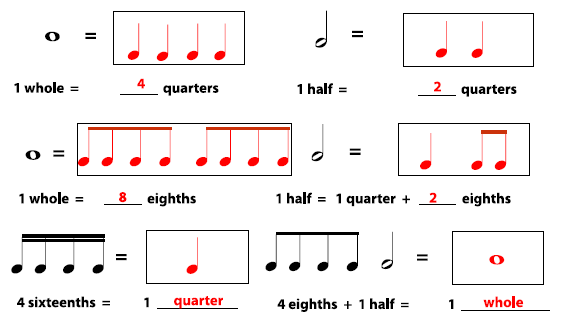
Solution to Exercise 1.9:

Solution to Exercise 1.10:
- A has a very strong, quick 1-2-3 beat.
- B is in a slow (easy) 2. You may feel it in a fast 4.
- C is in a stately 4.
- D is in 3, but the beat may be harder to feel than in A because the rhythms are more complex and the performer is taking some liberties with the tempo (Section 1.2.8).
Solution to Exercise 1.11:
There are an enormous number of possible note combinations for any time signature. That's one of the things that makes music interesting. Here are some possibilities. If you are not sure that yours are correct, check with your music instructor.
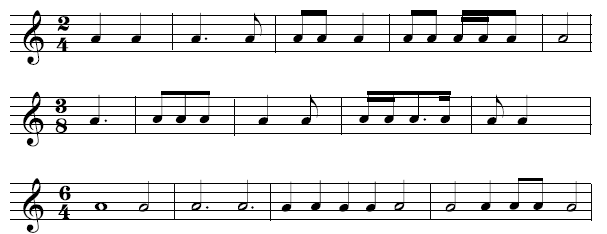
Solution to Exercise 1.12:
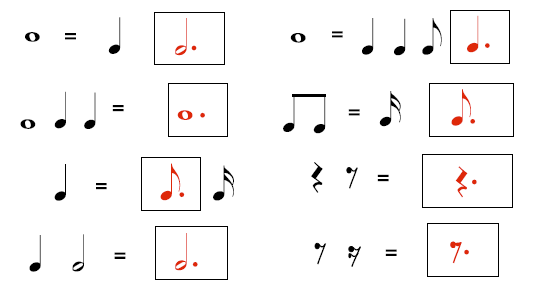
Solution to Exercise 1.13:
- a little fast
- much less motion = much slower
- more lively = faster
- very slow
- a little more motion = a little faster
- 8007 reads






